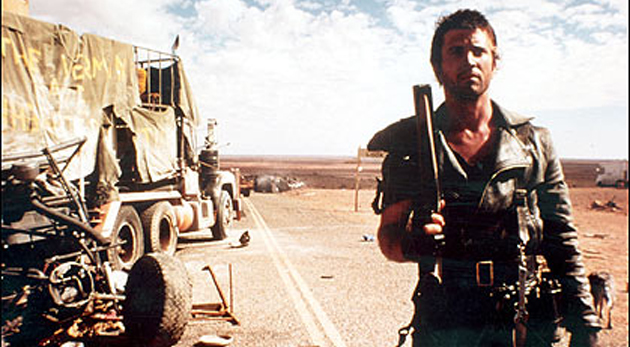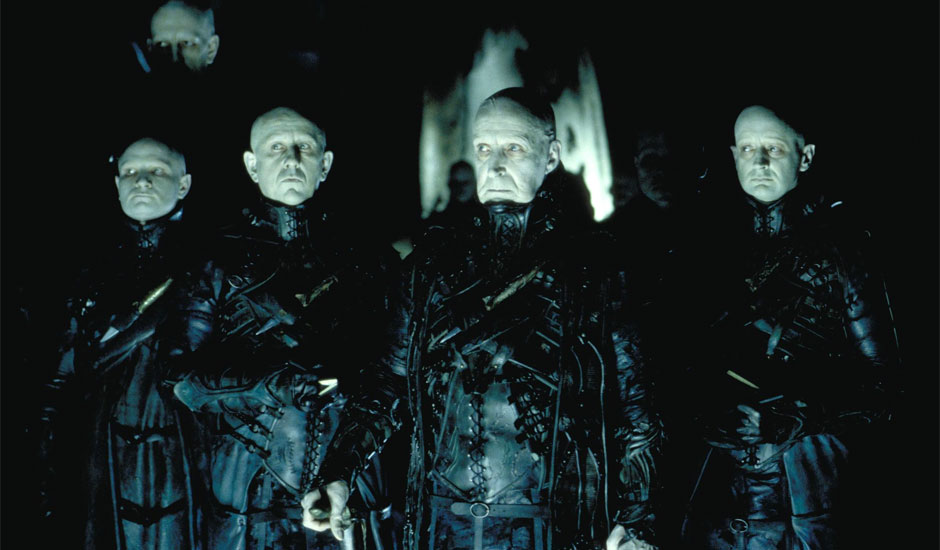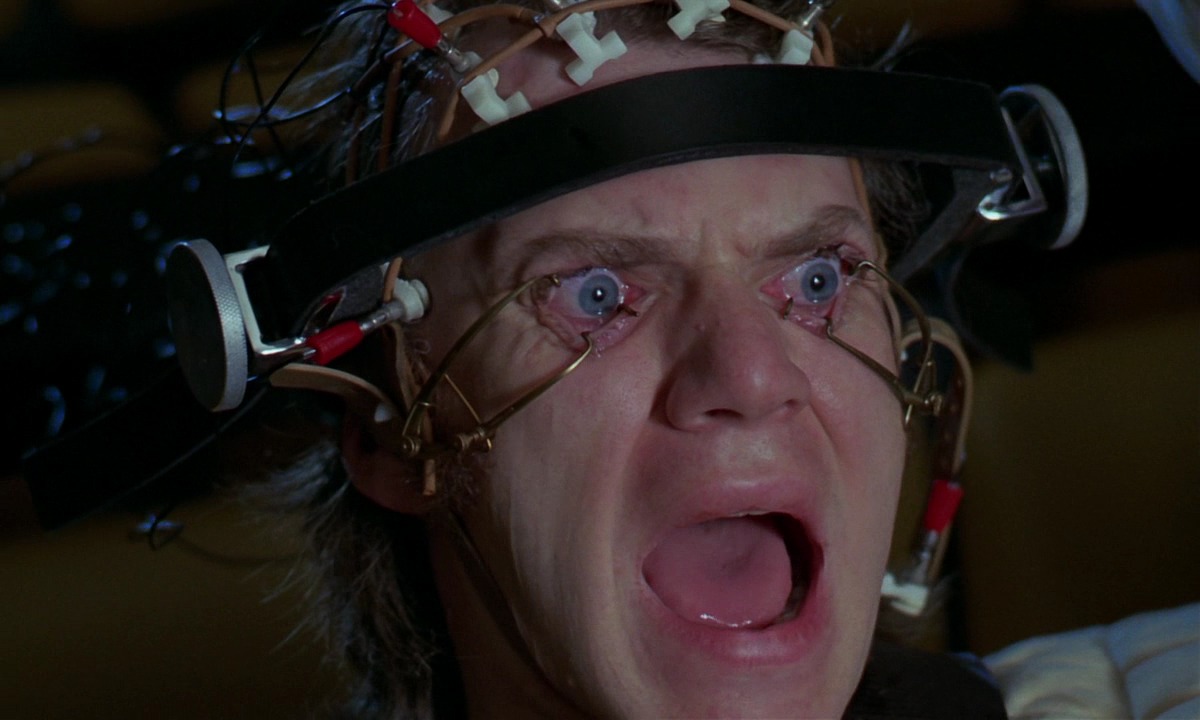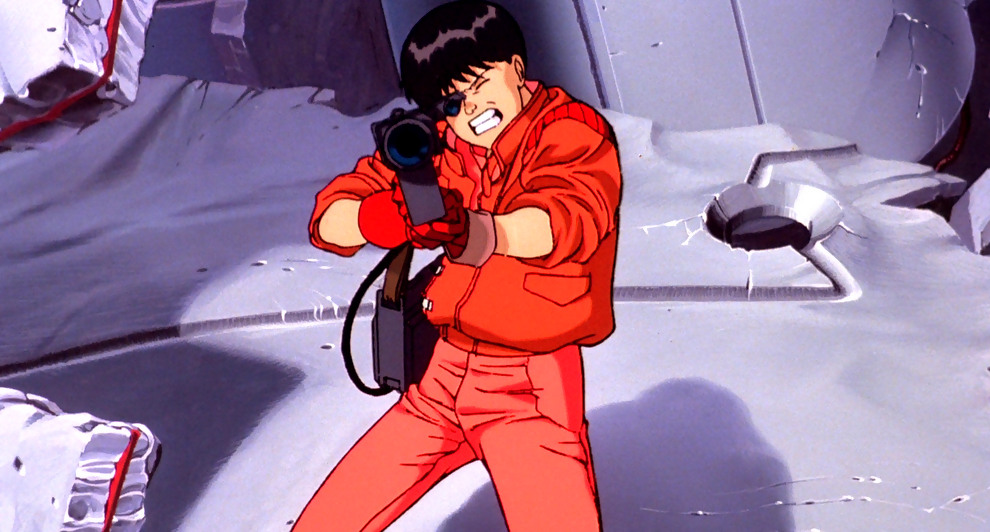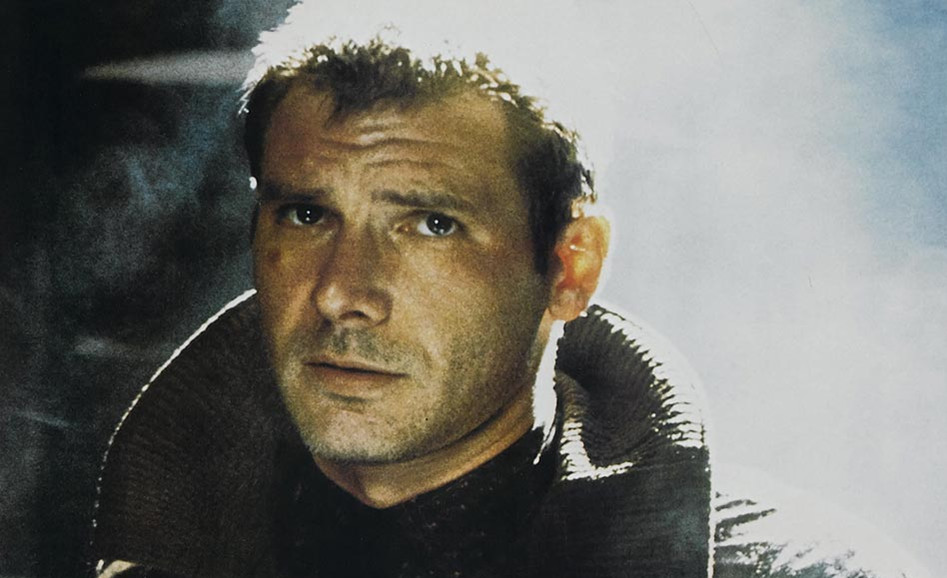7. Mad Max 2 (George Miller, 1981)
The second Mad Max is quite possibly one of the most kick-ass science fiction films to have ever been produced. And whilst the first film was a giant hit in its own right, this sequel upped the ante, eclipsed the original and became so popular it has almost become synonymous with the post-apocalyptic film genre and one of the greatest dystopian visons to have ever graced the screen.
The story of course is set a desert post-apocalyptic landscape in which gasoline has become one of the most prized commodities. The world is inhabited by a bunch of crazed barbarians whose only purpose seems to be cruising around in their modified vehicles in search of more fuel to be able to keep doing just that. Max (Mel Gibson) has been surviving as a loner ever since having lost his family in the first film but becomes the reluctant hero when he agrees to take back a man to his compound, which houses a very rare oil refinery, after an attack by scavengers.
Once in the compound, which is being besieged by a large gang of outlaws, Max makes a deal to get the inhabitants of the camp a semi-truck, which he came across earlier, in exchange for as much fuel as he can carry. This would enable those in the compound to escape, taking with them the tanker trailer in which they have stored all their gasoline. The plan works but when Max gets ambushed on his way out, he returns to the camp and offers to drive the semi-truck as no one is as qualified as him.
Mad Max 2 is simply the stuff of legend. It’s a superior action film, a superior science-fiction film and the benchmark against which all post-apocalyptic films since have been judged against. It virtually created the science fiction sub-genre and has been copied and imitated countless times since it was released in 1981. It also set the benchmark for vehicle-related stunt work and its final climactic chase sequence has arguably never been topped.
This is also the film that made Mel Gibson an international star, for better or for worse. The film received six nominations from the Academy of Science Fiction, Fantasy & Horror Films, winning the award for Best International Feature, whilst it received seven nominations from the Australian Film Institute, winning five for Best Direction, Sound, Production Design, Costume Design and Editing.
6. Children of Men (Alfonso Cuaron, 2006)
Based on the novel of the same name by P.D. James, Children of Men was director Alfonso Cuaron’s first critically acclaimed entry in the science fiction genre, before he also found commercial success last year with a very different type of sci-fi movie, Gravity.
The film tells the story of the world in 2027 when mankind has lost ability to procreate and civilisation is on the brink of collapse. The United Kingdom is the only place left in the world which still resembles some sort of functioning society but the influx of asylum seekers and general fear caused by the prospect of extinction has turned the country into a totalitarian state.
But when one woman, Kee, miraculously falls pregnant, the task of getting her safely to a group fighting for the survival of the human race falls upon a former activist played named Theo Faron (Clive Owen). Having to make their way through a landscape of utter chaos and fighting factions, the two, accompanied by a midwife, try to make it to the shore, where a ship will be able to take Kee to safety and hopefully find a cure for the global outbreak of infertility.
There’s plenty to like in Children of Men but it was the use and complexity of continuous shots by director Cuarón which really stood out and also foreshadowed the direction he was going to in with last year’s incredible Gravity.
A great cast (which also features Julian Moore, Chiwetel Ejiofor and Michael Caine), inspired direction, very impressive cinematography as well as a killer concept and screenplay make Children of Men a must-see for enthusiasts of grim dystopian tales. The film was nominated for three Academy Awards (Best Adapted Screenplay, Cinematography and Editing) and won two BAFTA awards for Best Cinematography and Production Design.
5. Dark City (Alex Proyas, 1998)
Directed and co-written by Alex Proyas, Dark City is a neo-noir-ish science fiction film which looks like something of a cross between Fritz Lang’s Metropolis and the Wachowski Brothers’ The Matrix, which this film actually pre-dates by a year.
John Murdoch (Rufus Sewell) awakens one night in a bathtub in a hotel, suffering from amnesia. In the room is also the body of a murdered woman and he receives a phone call from a Dr. Schreber (Kiefer Sutherland), who informs him he needs to escape as some men, known as “The Strangers” are after him.
After doing so, Murdoch learns his identity and that he used to have a wife (Jennifer Connelly) as well as the fact that, apart from The Strangers, the police is after him too for a series of murders which he doesn’t recall committing. He also finds out that he and the Strangers share a power called The Tuning with which time can be stopped. The Strangers use this power every midnight to rearrange the whole city as well as people’s minds and identities.
When he is eventually caught by police inspector Frank Bumstead (William Hurt), who sympathises with him as he has his own doubts about the strange reality everybody seems to live in, the two men seek out Dr. Schreber who, along with Murdoch’s fragmented memories of the past, might hold the key to solving the murders as well as the mystery as to what exactly is going on in the perpetually dark city all of them inhabit.
Whilst Dark City opened to primarily positive reviews, the film failed to ignite the box-office at the time of its release and bombed. Over time however the film has gained cult status and rightfully so. One of the most overlooked science fiction films of the nineties and a clear precursor of The Matrix, both in some aspects of its visual style as well as in some its themes, Dark City is a stunning looking piece of work and a great piece of metaphysical fantasy.
Equally incorporating elements of film noir, German Expressionism, Kafka and science fiction, the film was director Proyas’ follow-up to The Crow and so far the crowning achievement of his filmography, proving that he was a highly imaginative visual storyteller. If you like your science fiction dark, dystopian, moody and visually arresting, Dark City is just what the doctor ordered.
4. A Clockwork Orange (Stanley Kubrick, 1971)
Adapted from the novel of the same name by Anthony Burgess, A Clockwork Orange is a violent dystopian science fiction satire directed by Stanley Kubrick and starring Malcolm McDowell.
Alex (Malcolm McDowell) is a Beethoven loving delinquent in future London, who, together with his gang of “Droogs”, likes to get stoned at the Korova Milkbar before committing some “ultra-violence”, i.e: murder, rape and other heinous acts. When Alex is apprehended after killing a woman by smashing her skull with a giant phallus, he is sentenced to 14 years in prison. But two years into his sentence, he is able to partake in the experimental Ludovico treatment, which is designed to rehabilitate criminals by exposing them to violent imagery whilst being drugged and listening to loud renditions of Beethoven’s compositions.
As a result, Alex becomes nauseous whenever confronted with violence, sexual imagery or the music of his favourite composer. He is released but becomes a victim to the people he used to terrorise as they are out for revenge. Constantly abused by those he did wrong by and despising his life now that he can no longer enjoy Beethoven’s music, Alex tries to commit suicide, turning public opinion against the treatment that “cured” him.
Highly controversial due to its extremely violent content (the film was originally released with an X-rating in the United States), A Clockwork Orange was a critical as well as financial success upon its release. The film was later slightly re-cut to obtain an R-rating in the U.S. and was withdrawn from release in Britain, at the request of Kubrick himself, when various violent real-life crimes were linked to the movie.
No matter how difficult to watch and violent the film might be, it’s ultimately a biting satire about a world gone mad and psychological conditioning by the government. The film is filled with iconic scenes, imagery and phrases , an incredible soundtrack which features a lot of Beethoven as well as disturbing Moog synthesiser compositions, extremely black humour and a mesmerising central performance by Malcolm McDowell, who would forever be associated with the role of Alex.
The film was nominated for four Academy Awards, three Golden Globes and seven BAFTA Awards (all including Best Film and Director). It also won those awards at the New York Film Critics Circle Awards as well as the Pasinetti Award for Best Foreign Film at the Venice Film Festival.
3. Akira (Katsuhiro Otomo, 1988)
Akira is not just one of the best animes ever released. It’s one of the best science fiction films ever released as well. An absolute landmark in Japanese animation, which forever opened the eyes of the West to anime, its influence can not be understated and its cyberpunk vision of a dystopian future is as impressive today as when it was first released over 25 years ago.
The year is 2019 and Tokyo has been rebuild as neo-Tokyo after some cataclysmic event caused 30 years ago by someone called Akira. Tetsuo is a young member of a motorcycle gang, who greatly looks up to its leader Kaneda. One night Tetsuo is involved in an accident with a child-like being who has been sprung from a laboratory by an underground resistance group. As his gang look on, he’s taken away by the military.
Later, when Kaneda tries to bust him out of the military hospital with the help of the resistance group, he finds out that Tetsuo has gained great psychic abilities. The power however goes to his head and he escapes by himself on a quest to look for the legendary Akira, who apparently is held captive somewhere by the military. As time progresses Tetsuo seems to lose all sense of reality and control over his powers and it soon looks like neo-Tokyo might be under threat again, just like it was 30 years ago by Akira.
Akira was adapted from a 2182 page manga and deals predominately with the first half of the comic book series. Whereas most animes up until that point had limited animation, Akira broke the rules by having its dialogue pre-recorded to which the character’s mouths were later animated in sync and having an overall fluid motion, previously unseen in the genre.
Additionally the film had a huge scope, stunning designs and a truly unique and unforgettable soundtrack. The film has a fully realised cyperpunk dystopian vision that has never been matched in any other animated work and if you only see one anime in your life, make sure it is this one.
2. Metropolis (Fritz Lang, 1927)
A highly influential German Expressionist silent science fiction film, Metropolis is directed by Frtiz Lang, who co-wrote the movie with his then wife Thea von Harbou, and is especially noteworthy for its grand design and as the first ever feature length film in its genre.
Set in the futuristic dystopian city of Metropolis, the film deals with the glaring difference between its upper classes, who live in luxury and decadence in its high towers, and the huge working class, who live in slave-like conditions in the lower parts of the city, keeping its machinery going. Freder (Gustav Froehlich) is the son of the city’s ruler, Joh Fredersen (Alfred Abel), and lives in blissful ignorance about the the conditions of those below until he one day meets Maria (Brigitte Helm), a beautiful girl from the city’s lower levels, when she visits the Eternal Gardens with a group of kids to show them how the wealthy live.
Struck by her beauty and aghast by her poor appearance, he makes his way down to the lower levels and discovers the conditions there. When he later confronts his father about these, he learns to his horror that his father thinks that this is the way things ought to be.
Freder then goes back below and takes the place of one of the workers to find Maria whilst his father seeks the help of an old inventor friend (Rudolf Klein-Rogge) who has built a robot, which they use to mimic Maria as she has started to preach for equality and call for a Mediator between the rich and poor in the city’s lower levels. But what Joh Fredersen hasn’t foreseen is that his son has grown into this Mediator and that his old inventor friend despises him and will use his invention in an attempt to bring down Metropolis.
The most expensive film ever produced at the time, Metropolis cost many times over the normal production cost of a regular film and nearly bankrupted its studio upon its release as it was met with mixed reviews. As a result, and due to its excessive long running time of over two and a half hours, the film was cut substantially as about one quarter was excised for the American release.
Consequently large portions of the film have been missing over the years and various versions have floated around until in 2008 a damaged 16mm print was found in Argentina from which a 95% restored version was created and finally shown in 2010 in Berlin. Its influence can not be understated as Metropolis added a whole array of images and ideas to cinema and popular culture. Countless films have referenced it, varying from Dark City’s Expressionistic style, the design of C3PO in Star Wars and even an anime of the same name.
The film has been the inspiration for many a pop singer, varying from Madonna to Queen to even rap artists and even a musical theatre production has been staged. Metropolis is also the first film ever to be inscribed on UNESCO’s Memory of the World Register. A truly epic and monumental endeavour, Metropolis is where modern science fiction and dystopian films started.
1. Blade Runner (Ridley Scott, 1982)
Based on the novel Do Androids Dream of Electric Sheep? by Philip K. Dick, Blade Runner is a dystopian neo-noir science-fiction film and arguably, along with Alien and The Duellists, one the greatest films directed by Ridley Scott, who never again returned to such heights.
The year is 2019 and Los Angeles has turned into a sprawling dystopian megapolis filled with giant neon signs and flying vehicles. Rick Deckard (Harrison Ford) is a retired blade runner, detectives who specialise in hunting down and taking out rebellious replicants, life-like androids with a build-in limited lifespan who are designed by the Tyrell Corporation to take on jobs which actual humans are not willing to perform in the off-world colonies.
Deckard is called back into police headquarters and put back into active duty by his former boss (M. Emmett Walsh) when a few replicants, lead by Roy Batty (Rutger Hauer), have escaped to earth in search for extended lifespans. As Deckard investigates and visits Tyrell headquarters to gain a better understanding of the latest model replicants, he meets Rachael (Sean Young), a woman unaware of the fact that she isn’t human, and falls in love with her. In the meantime Roy Batty and his fellow replicants try to gain access to the Tyrell corporation too as they want their designer to somehow undo the time limit placed on their existence.
Whilst Blade Runner wasn’t a huge success upon its initial release and divided critics, the film gained a true cult following over the years and has since been regarded as a true science fiction masterpiece. The film’s look was unlike anything that had ever come before it and its production design, special effects and the melancholic synthesiser score by Vangelis still make it a truly unique and stunning experience.
The film also works on many levels; as a dystopian criticism of a capitalist culture gone haywire, as a meditation on what it means to be human and as one of the best examples of a neo-noir. On top of that, there’s the outstanding cast with Harrison Ford clearly trying to distance himself from his heroic wiseguy image from Star Wars and Raiders of the Lost Ark, whilst Rutger Hauer made his international breakthrough as the enigmatic replicant leader. In addition Sean Young, M. Emmett Walsh, Daryl Hannah, Brion James, Joanna Cassidy, Edward James Olmos, Joe Turkel, William Sanderson and James Hong all round out a great supporting cast.
Blade Runner has been released in no less than seven different versions, three of which have been widely seen. After negative feedback from test screenings, the film was initially released in a heavily altered studio-cut, which added a voice-over whilst also adding as well as deleting certain scenes. In 1991 the studio released the “Director’s Cut”, removing the voice-over and studio-imposed ending whilst adding a vital dream sequence, whilst in 2007 the “Final Cut”, the only one Scott had complete control over, was released for the 25th anniversary of the movie.
One of the most influential science fiction films ever made, Blade Runner remains a cinematic milestone and only seems to get better with age. Fans of the movie are also advised to seek out the nearly three-and-a-half hour “making of” documentary Dangerous Days: The Making of Blade Runner.
Author Bio: Emilio has been a movie buff for as long as he can remember and holds a Masters Degree in Cinema Studies from the University of Amsterdam. Critical and eclectic in taste, he has been described to “love film but hate all movies”. For daily suggestions on what to watch, check out his Just Good Movies Facebook page: https://www.facebook.com/goodmoviesuggestions.
